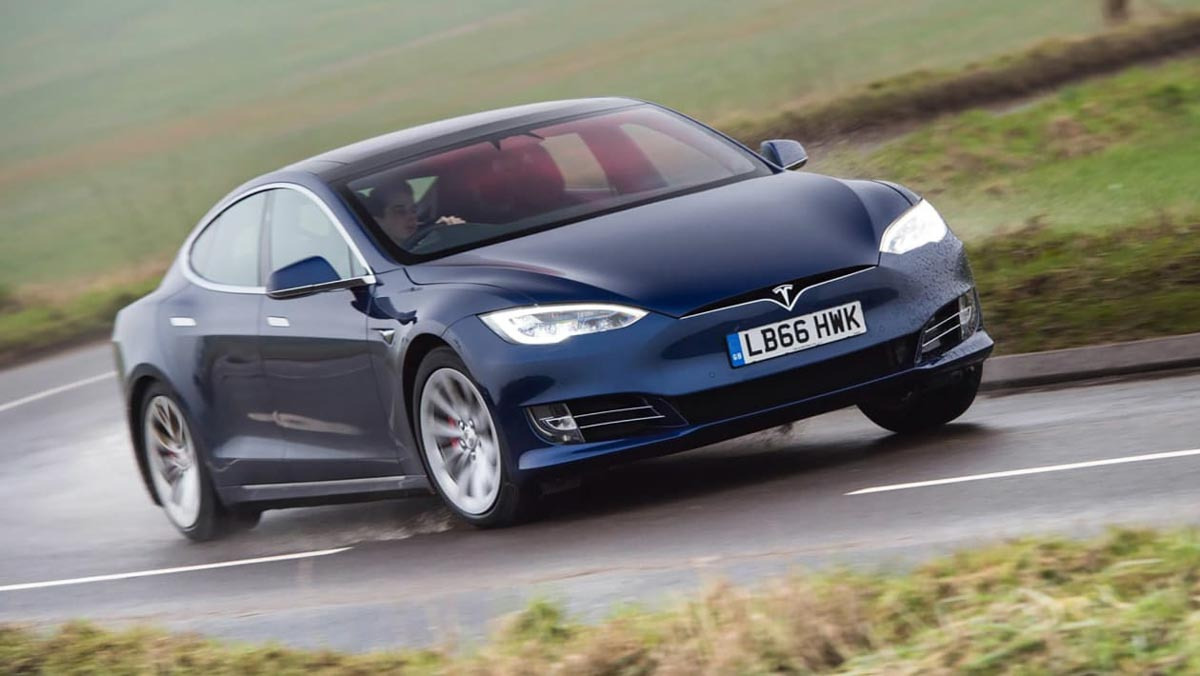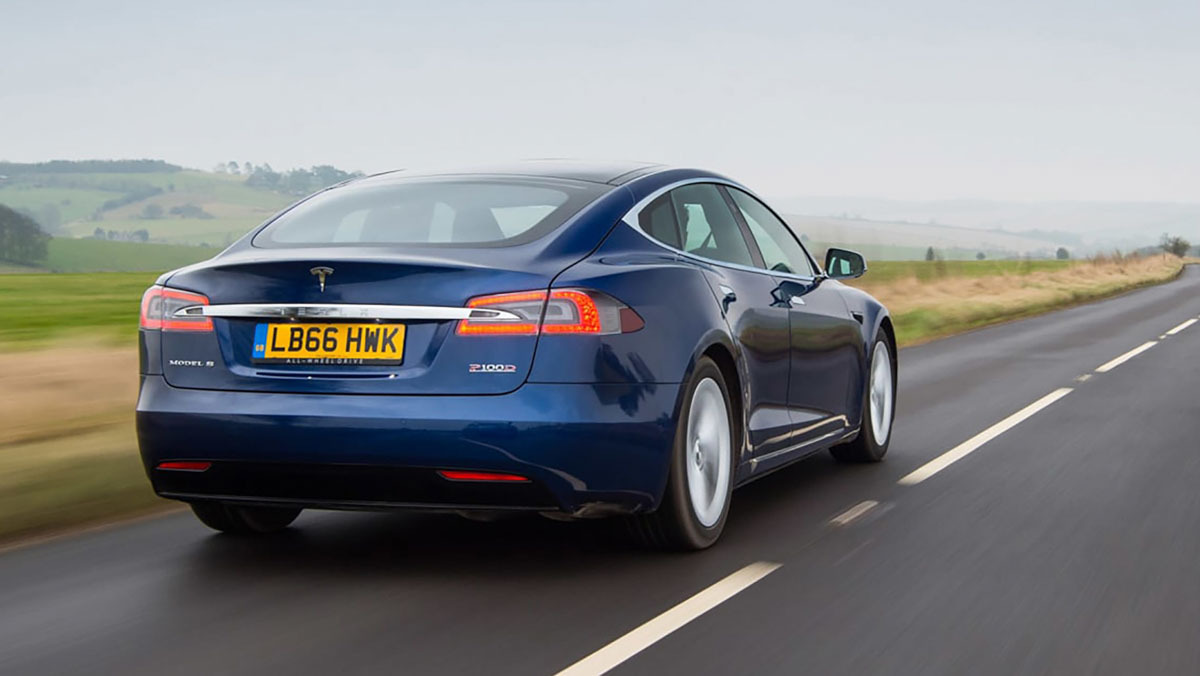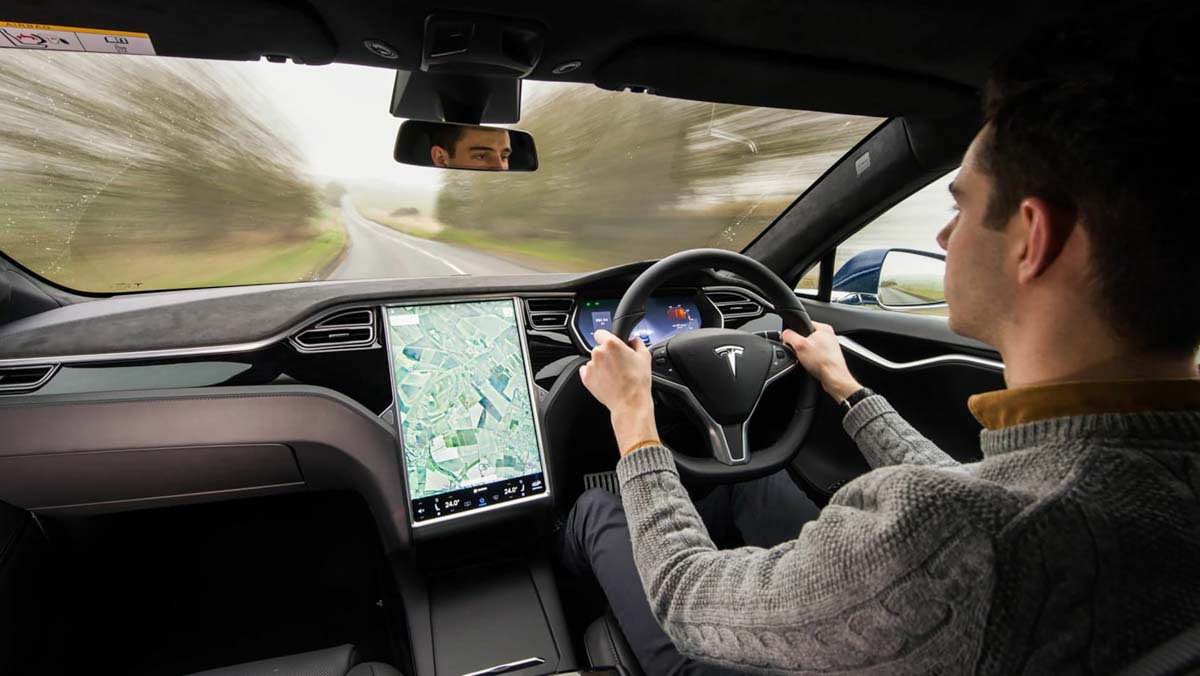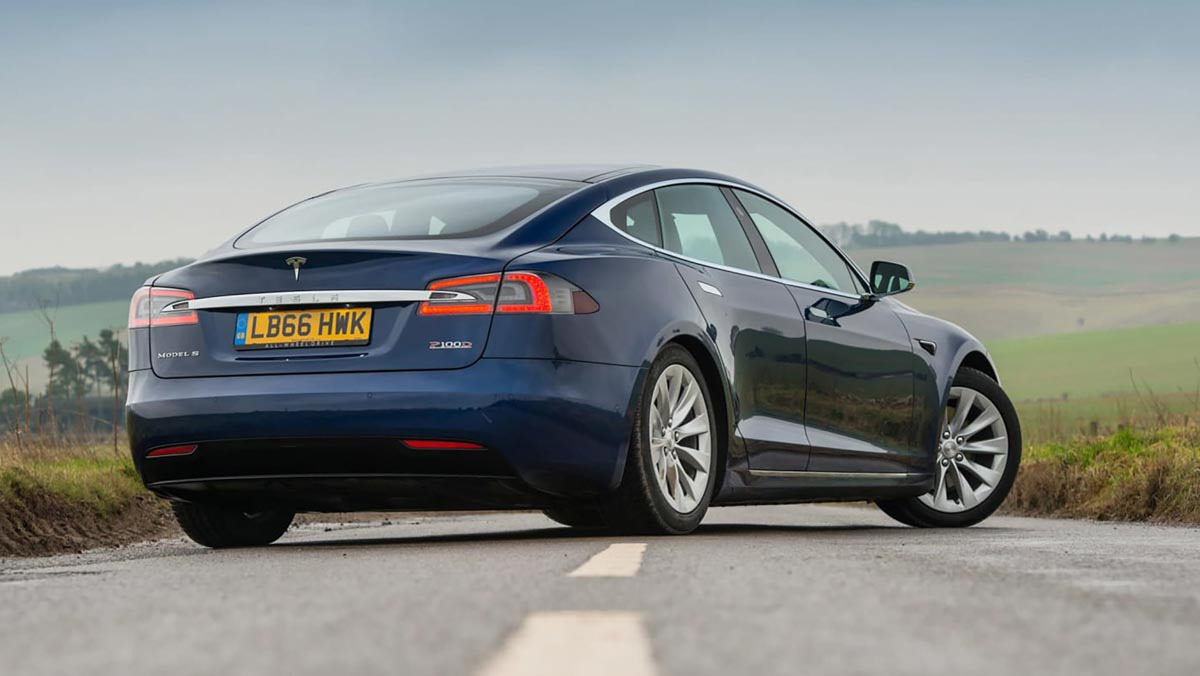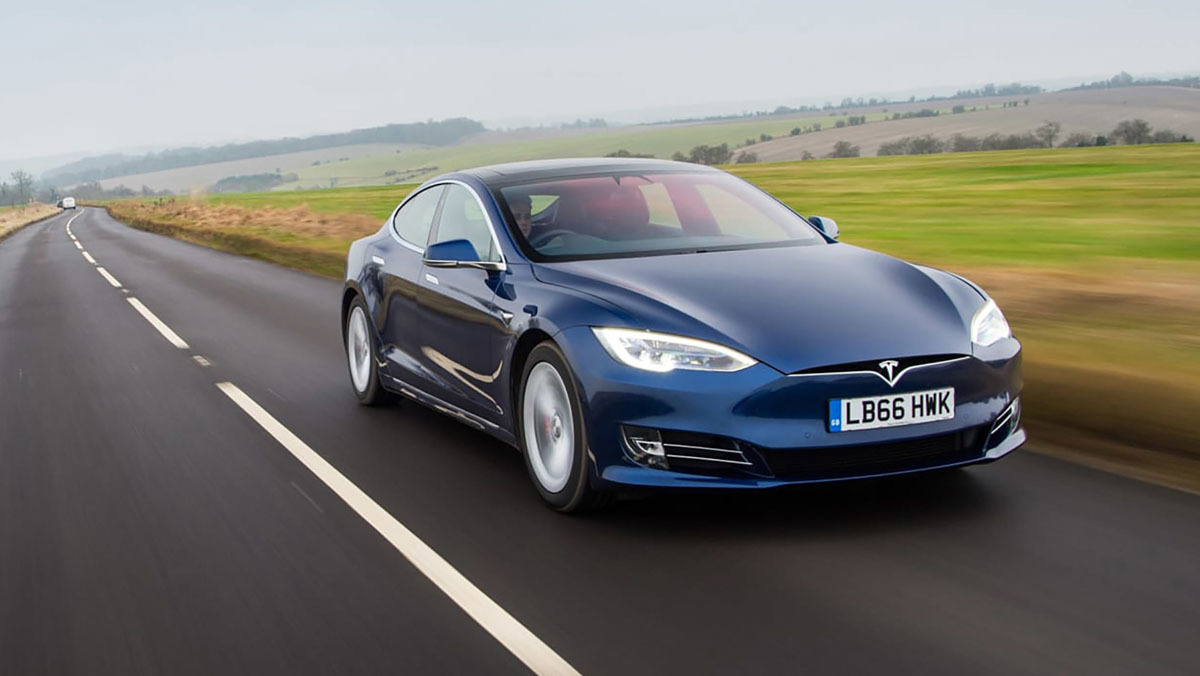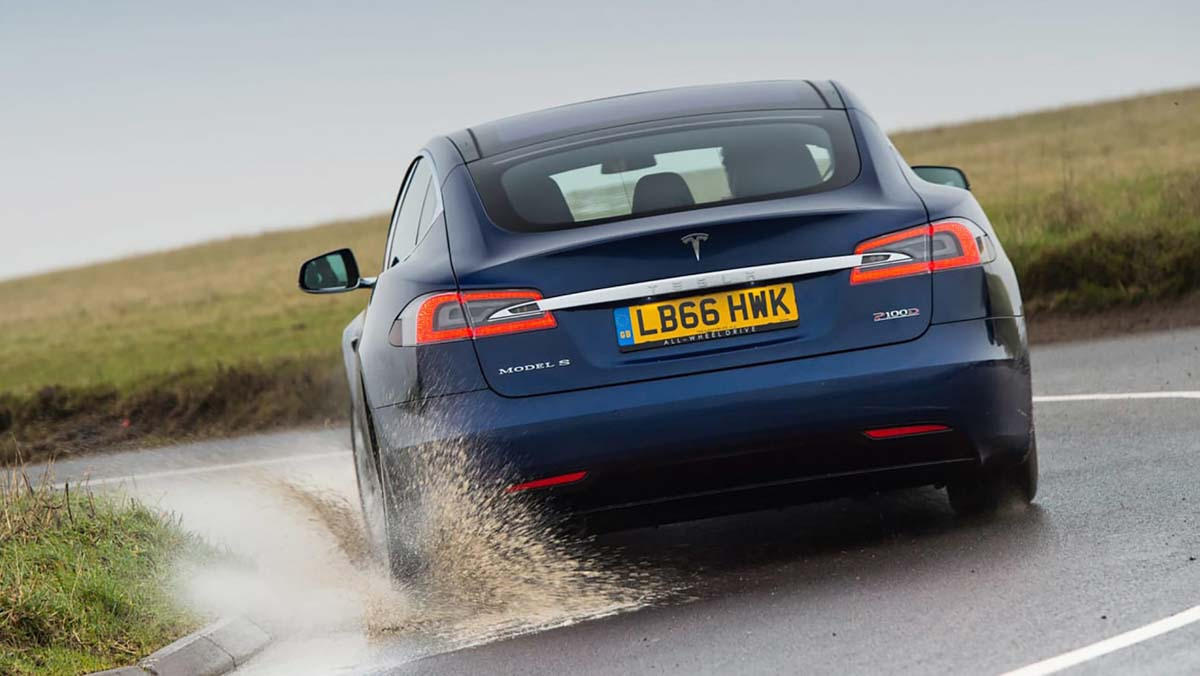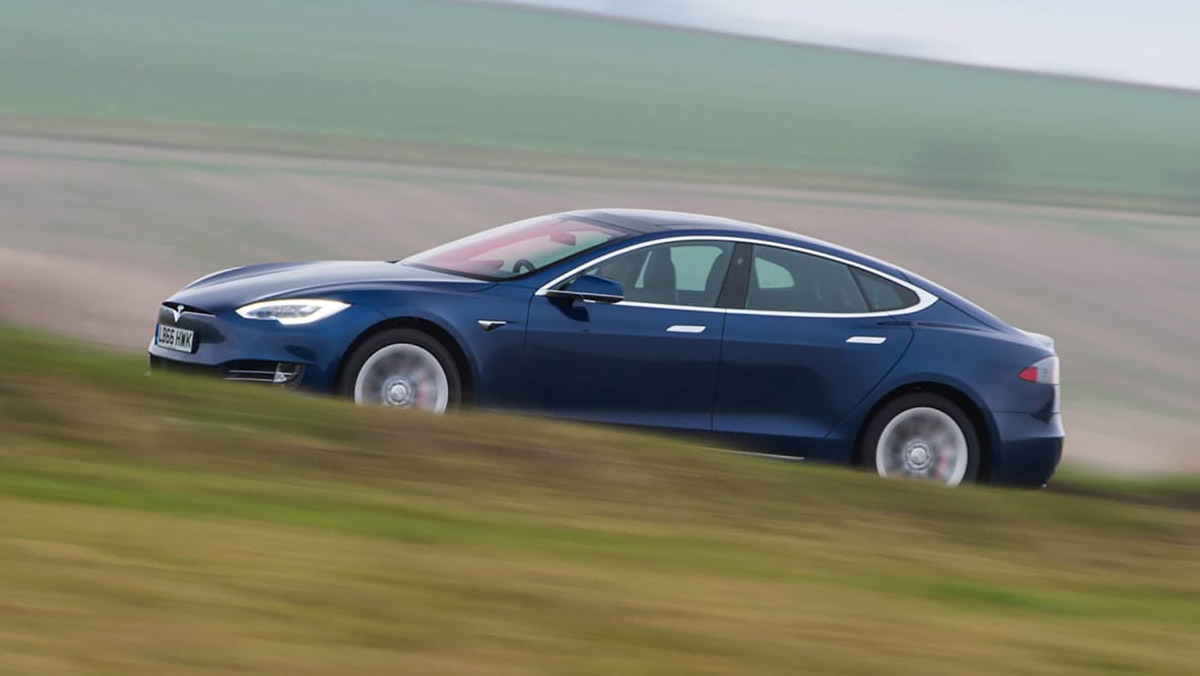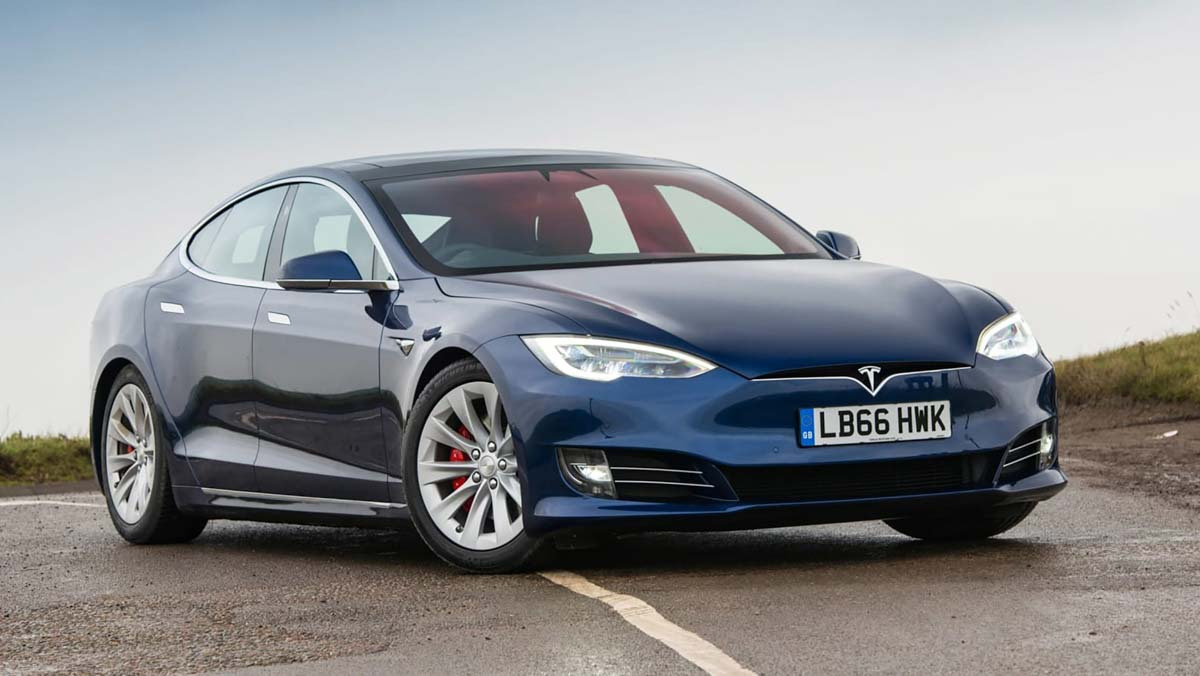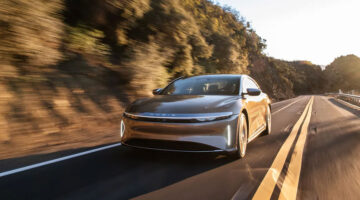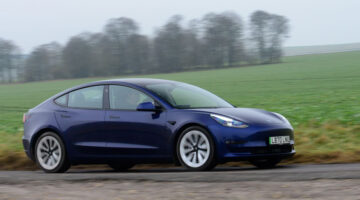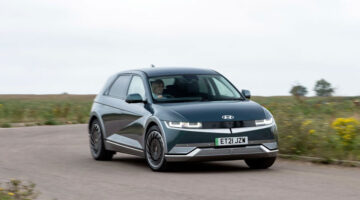The Model S exudes the benefits an electric car has over fossil-fuelled alternatives; Supercharger network makes it more usable than ever
| Remarkable and addictive acceleration, low running costs | |
| Regenerative brakes make it difficult to really connect with the car |
PRICE from $109,022
We’ve been led to believe that the internal combustion engine is old-hat and that electric cars will be the future. Not that long ago, that would have been a dire and scary proposition, but electric cars have gone through a renaissance and now some are even becoming desirable. This change of reputation is, in part, thanks to Tesla and its venerable Model S; a premium, fast, and usable electric saloon car.
It’s been sold in various guises over the years with model names such as the P75 and P100D but in its latest incarnation there are effectively three models to choose from; Long Range Plus, Performance and most recently, Plaid. ‘Ludicrous Mode’ gives the $129,470 Performance an organ-rearranging 2.3sec 0-100kph time, with the upcoming Plaid said to bring this number under 2sec…
The Model S combines such incredible performance with an effortless driving experience making it an astoundingly effective machine for covering ground. With a maximum real world range from 500 to 600 kilometers (depending on which spec you choose) and an expanding network of supercharger points that allow the Model S to top up its battery in a remarkably short space of time, it’s also one of the most usable electric cars on the market.
When it comes to pure thrills nothing else about the Model S can match its ability to accelerate. That’s mostly because it’s such a remarkable party piece, but equally the Model S isn’t a car that comes alive in a corner or allows a driver to really get under its skin.
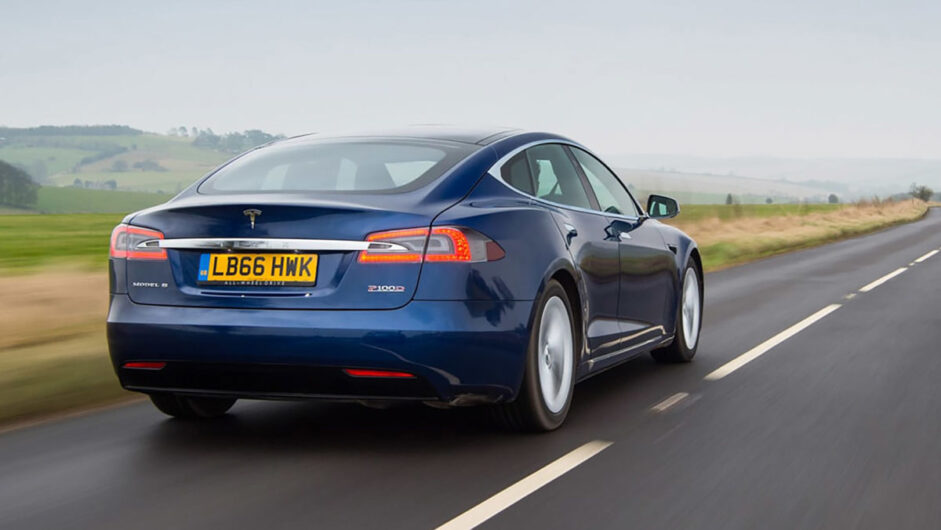
Prices, specs and rivals
Since release the price range has risen and fallen like a jittery stock market, with the cheapest Model S now the Long Range Plus with a price of $109,022. Previously there was a lower priced model with a rear mounted electric motor driving the rear wheels, but now all Model S versions have four wheel-drive with an electric motor mounted on each axle.
Despite its entry-level status in the range, the Long Range Plus has the most range of the models currently available, an impressive 652 kilometers on the WLTP cycle – the upcoming Plaid is said to boast over 837 kilometers of range, however that model is yet to be revealed in full. Top of the tree for now, though, is the $129,470 Performance version which sacrifices 15 kilometers of range for additional forward momentum and a claimed 0-100kph time of 2.3sec. For comparison, the range-topping Porsche Taycan Turbo S is said to hit 100kph three tenths later.
The array of standard kit will satisfy most and so the options list is thankfully short. Smart air suspension (once an option) is now standard, as is autopilot which ‘Enables your car to steer, accelerate and brake automatically for other vehicles and pedestrians within its lane.’ If you want full self-driving capability it still remains a pricey addition, at $9270. Other options are limited to exterior colour (up to $3408 for multi-coat red), carbon 21-inch wheels (a snip at $6000), interior colour – black leather is standard, white or cream cost $1980– and that’s about it. Rear facing seats are no longer available, so if you want a seven-seat Model S you’ll have to look to the second hand market. Seven seats or not, though, the all-electric saloon is a highly practical car.
The Model S’s most obvious rival is the Porsche Taycan, a similarly-powerful all-electric saloon. Straight-line performance comes close to the Tesla Model S, however range is a considerable step down, with the most efficient variant said to cover just under 500 kilometers on a charge – dynamic ability, however, is where the Porsche really excels…
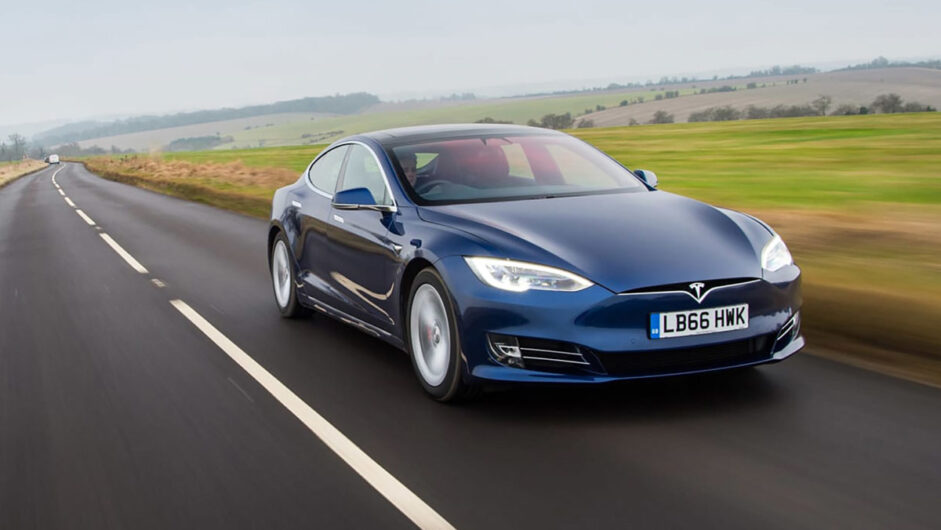
Despite the Tesla’s hypercar-like performance, its high price makes it far from rival-free across its price spread. The competition may be fuelled more conventionally but have the benefit of more focused, sporting-inclined engineering on their side. None offer full electrified powertrains, though.
Porsche’s super-limo, the Panamera Turbo S E-Hybrid can travel for 50 kilometers on battery power alone and has fuel consumption and CO2 emissions of 3.5L/100km and just 66g/km. The likelihood of the HUD reading such figures is slim with the V8 combining with the electric motors to staggering effect – 690bhp and 642lb ft of torque.
The above Porsche is the only competition that can provide a similar blend of performance and frugality, otherwise BMW’s F90 M5 and the Mercedes-AMG E63 certainly compete on the power front packing around 600bhp each. Free of concern for the polar ice caps the two German barges offer superior handling and agility, especially on track with the AMG emitting a typically raucous soundtrack. Interior is another area where the Tesla is subpar to its German rivals.
If you’re drawn to the all-electric lifestyle but don’t quite have the cash to drop on a Model S, the Model 3 could well be the model for you, acting as a cheaper, more compact alternative.
Performance and 0-100 time
There are two versions in the Model S lineup, badged Long Range Plus and Performance, with both now utilising a 100kWh battery – the upcoming Plaid is said to feature an even larger pack, but the exact number is yet to be confirmed. Essentially, the higher the number, the longer the Tesla’s range and better the performance.
The slowest Model S, the Long Range Plus, can still hit 100kph from a standstill in 3.7sec, a more than respectable time for a big saloon car. The rest of the range gets quicker still, with the Performance model now taking 2.3sec for the 0-100kph sprint and the upcoming Plaid said to cover the same increment in under 2sec.
Tesla’s CEO, Elon Musk, wanted to create a car whose performance could match that of the McLaren F1 – a car Musk used to own in his earlier entrepreneurial days. Not only has he achieved that, but the Model S has rather trounced the F1’s oft-quoted 0-100kph time of 3.2sec, going a full 0.9sec quicker.
The acceleration the Model S is capable of is most astonishing at low speeds, and particularly off the line where it shoots off without any fuss or wheelspin, just a significant jolt forwards. It loses some of its impact while on the move, but the Model S can still pile on the speed at a respectable rate on to a limited top speed of 250kph for the entire range.
Engine and gearbox
Every Model S has a pair of electric motors, one mounted on the rear axle and one mounted at the front to make them four-wheel drive. The two motors in the Performance model give more than a hint as to why it’s so accelerative, combining to produce around 592bhp.
Because the Tesla Model S doesn’t have a regular engine it doesn’t use a traditional gearbox with multiple ratios and some means of selecting them. Instead, the drive from the high revving electric motors is sent through a reduction gear, which converts high motor speeds to more appropriate wheel speeds. The motors provide enough torque at any revs and are able to spin at a larger variation of speeds than an internal combustion engine, there is no need for a gearbox.
The savage acceleration of the Model S means you don’t long for the noise and drama of an internal combustion engine. But in an age where engines that have had all their character lobotomised by turbochargers have become the norm, that’s perhaps not a huge surprise. Ten years ago, when saloon cars had big burbling V8s or screaming V10s the Tesla’s effective but clinical approach might not have been quite enough to distract die-hard enthusiasts.
Ride and handling
If you’re completely new to the Tesla Model S then the starting procedure might be a little baffling, leading you to search in vain for a starter button or ignition slot for the car-shaped key. But rather than being inconveniently placed or deliberately difficult to find, there is no ignition or any means of turning the Model S on; it’s simply ready as soon as you climb in. From here, all you do is depress the brake, pull down on the Mercedes-sourced, column-mounted gear selector and then squeeze the ‘throttle’ – perhaps more accurately an accelerator pedal – to pull away.
The lack of engine noise, although slightly eerie to begin with, means that the Model S feels incredibly civilised. Silently wafting down a road just oozes a sophistication that isn’t available on even the most expensive, premium cars. A calm and supple ride complements the quiet cabin, the first hint of anything other than total serenity is some breathy wind noise, but rather than being dominant it’s only really audible because there isn’t any engine noise to help drown it out.
What makes this refinement even more appealing is that, whenever you choose, you can unleash the Model S’s incredible, instant performance. The contrast between such luxury and supercar acceleration doesn’t lose its novelty.
With such a soft ride, and the thought of such phenomenal acceleration figures, you expect the rear end to squat considerably – almost to the point the bodywork might drag on the floor – as soon as you touch the accelerator pedal. But surprisingly, the entire car tenses and the forward thrust remains just that, rather than a force that’s trying to heave the body from the chassis.
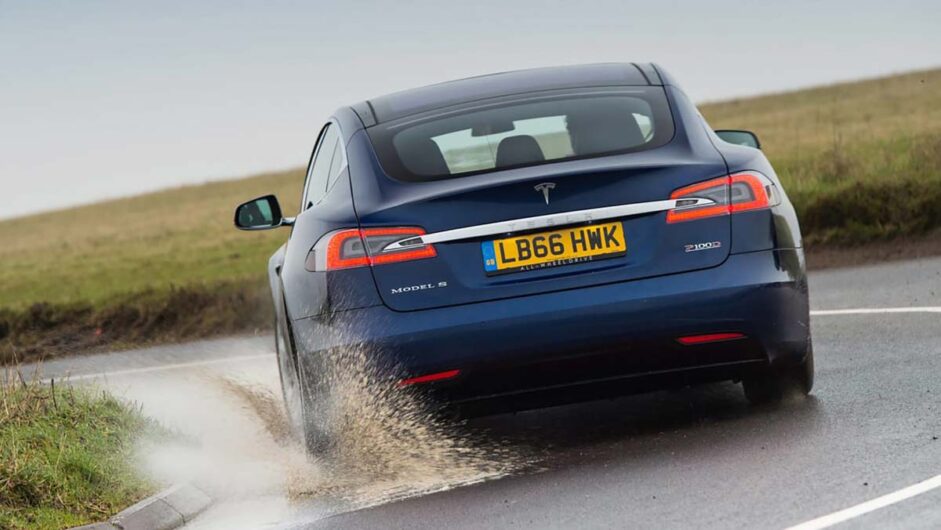
This staggering acceleration begins to skew your opinion of what sort of car the Model S is. On thrust alone it’s in supercar territory and it causes you to critique the rest of the car by the same unfairly high standards. But it pays to remember it is still a big, heavy saloon.
With the throttle releasing such savagery, the rest of the controls feel somewhat lacking, initially. They aren’t, though. The brakes, for instance, might not be forceful enough to rearrange your internal organs but they are strong and effective, and should also be commended on how well they cope with intense abuse. The Tesla’s rapid acceleration means you often need to scrub off a lot of speed, and given the novelty of the instant speed never seems to diminish, you need to do so frequently. You’d think that hauling up the Tesla’s 2240kg bulk so often would cause major issues, but the brakes continue to work well.
The brakes need to handle repeated hard work in part because of the cornering style the Model S seems to prefer. Its ability to gain speed means that, no matter how slowly you navigate a bend, you can regain your speed within moments of exiting. It’s easy to get into the habit of slowing down excessively just to accelerate away.
But the Models S is hardly cumbersome through a corner. It turns in with just a small degree of roll and rotates just enough to have you pointed towards the apex at a rather impressive speed. The steering doesn’t send a great deal of detail to your hands, but the Model S transmits enough information for it not to feel completely remote.
Carry a touch too much speed and you do detect a hint of understeer, but it’s fleeting and dealt with by the car before it materialises into anything worrying. The Tesla’s acceleration when exiting a corner is just as impressive as it is in a straight line, and equally without any real hysterics or loss of grip – just a display of incredible traction and grunt.
Despite this, it’s not an easy chassis to take advantage of. Although the controls, the steering, throttle and brakes are good in isolation, they don’t integrate with one another especially well, and that makes it difficult to be smooth and calculated with your inputs. Stepping off the throttle drops the speed excessively thanks to the car’s brake regeneration. With such a dramatic effect on the car, whether forward movement when the accelerator is depressed or significant deceleration when lifting off, it’s tricky to make minor adjustments, and frankly impossible if you want to be smooth.
Turning off the regenerative braking (which is very easy to do through the infotainment screen) improves things but it reveals the brake pedal doesn’t have a linear and progressive influence on the brakes.
The Model S is very much a refined and considered saloon car but its supercar-style acceleration isn’t quite matched by the dynamic abilities of the chassis. However, that doesn’t stop it being able to rival some of the best sports saloons on sale now.
evo Comment
‘As a driving experience the Model S pretty much sells itself. Incredibly relaxing yet blessed with tremendous reserves of seductive performance in the meaningful sector of the speedo needle’s arc, it combines the haymaker punch of a supersaloon with an ability to soothe and de-stress that surpasses all but the most luxurious Range Rover or Bentley.’ Richard Meaden, contributing editor
L/100km and running costs
With a comfortable real-world range of 500 kilometers on a full charge, the Model S is more than able to cover most there-and-back commutes. But scattered around the country are a Tesla ‘Superchargers’, places where you can go to quickly recharge the car’s batteries.
These Supercharger points liberate Teslas from restrictive journeys from home to work and back, or the need to wait for hours while recharging, something that blights many fully electric cars. Admittedly they aren’t as quick as filling a car with fuel, but in the time it takes to have some lunch or a break on a long road trip, it can add a significant amount to a Tesla’s range. They’re free for existing Model S owners who purchased their cars before 2017, but those purchased after that date have to pay to use them.
The farthest-reaching Model S version is the Long Range Plus, which manages to go 652 kilometers on a single charge according to the WLTP test cycle. The hotter Performance model has a range of 637 kilometers (WLTP), but expect that figure to be much lower should you have a heavy right foot.
Environmentally speaking, the Model S is classed as a zero-emissions vehicle, but every kilometers you drive still has a CO2 consequence. Estimates suggest a figure of around 85g/km, though unlike conventional vehicles the Model S could get cleaner over its lifetime, as power generation moves towards renewable sources.
In theory, the Model S may need less maintenance than conventionally-fulled rivals, free of fluid and filter changes, spark plugs, exhaust systems and other eventual consumable items – and thanks to strong regenerative braking it should go easier on its friction brakes too.
On the flip side, there’s the spectre of battery replacement at some point down the line, though it may well be a decade or more into the future before such issues really present a problem. Environmentally, such concerns are relatively low, since batteries are commonly recycled or reused – Tesla’s own Powerwall storage system illustrates a potential use for out-of-service Model S battery packs.
Interior and tech
Although it’s expensive and it exudes a level or luxury and refinement from its chassis and drivetrain that would shame Rolls-Royce, the interior of the Model S is remarkably functional and basic. Its storage compartments are lined in rubber and its interior lacks any sort of decoration, particularly if darker cabin colours are selected. But there is a pleasing simplicity to its design. There are very few buttons, for example, thanks to the huge 17-inch touchscreen display that takes up most of the dashboard’s real estate and controls most of the car’s functions.
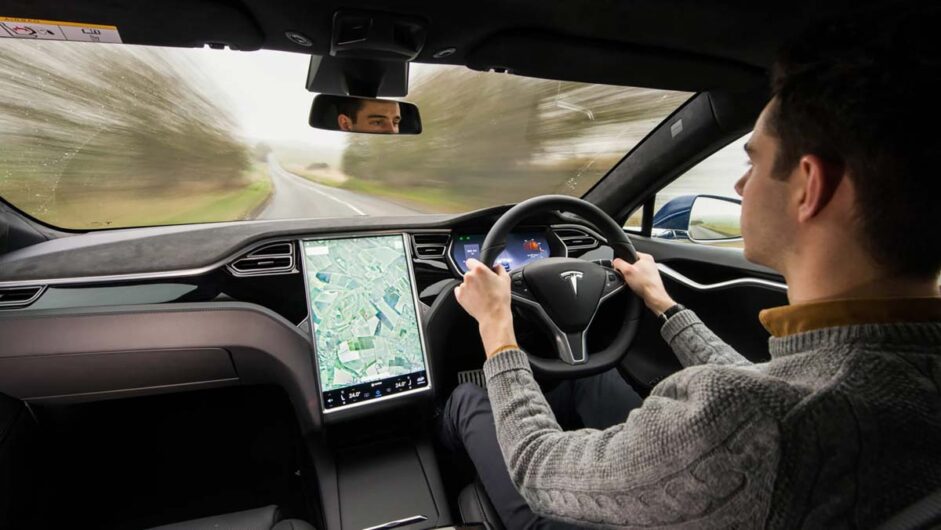
Some will be put off by the need to dive into menus to control heating or radio, and although this is often frustrating in other cars, the Tesla’s clear interface makes it much less distracting than most touchscreen systems.
Perhaps the cleverest aspect of the screen and your interactions through it is the ability for Tesla to update your car wirelessly overnight. It’s entirely possible to come downstairs one morning to find your car has suddenly gained a host of extra functions, improved menus, and occasionally, even better performance.
Design
Is the Model S’s styling a little generic? Perhaps, though that could be deliberate. It looks imposing and expensive, and Tesla has resisted the temptation to adopt the weirdness that makes some other electric vehicles look like they’re trying too hard. However, without a big petrol engine the Model S doesn’t need to be the same shape as a conventional saloon and it seems like a missed opportunity not to have taken advantage of the more flexible nature of the drivetrain.
The Model S has coined the family look for Tesla and its most recent car, the Model 3, shares many of the Model S’s features – albeit less attractively proportioned. That also applies to the recent Model X SUV.
Where the Model S looks more individual than regular executive cars is the closed-off front ‘grille’ – cooling demands of electric cars are less than that of internal combustion ones – and in its details. Sturdy metal door handles glide out to meet you as you walk up to the car with a key in your pocket, and the car’s charging port is hidden behind an unobtrusive door forming part of the rear light cluster units.
This article originally appeared at evo.co.uk
Copyright © evo UK, Dennis Publishing

